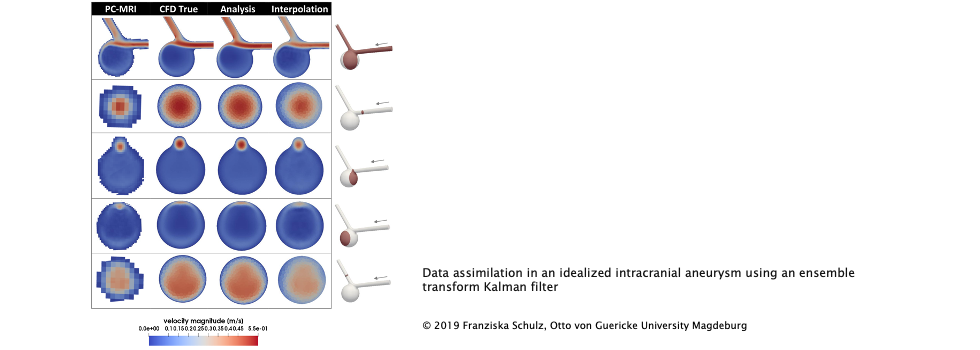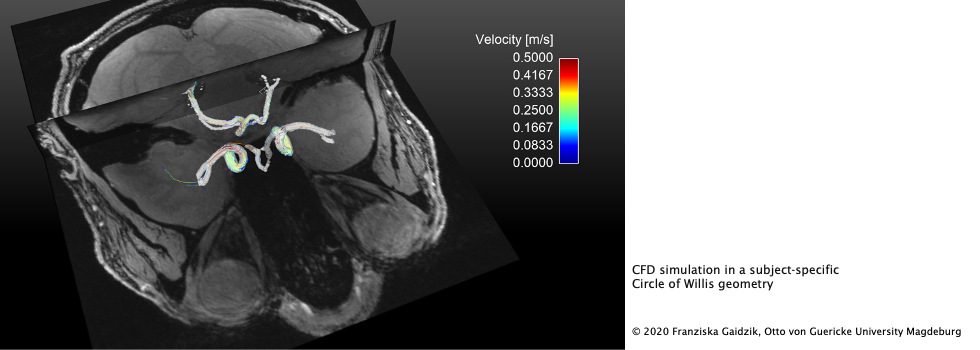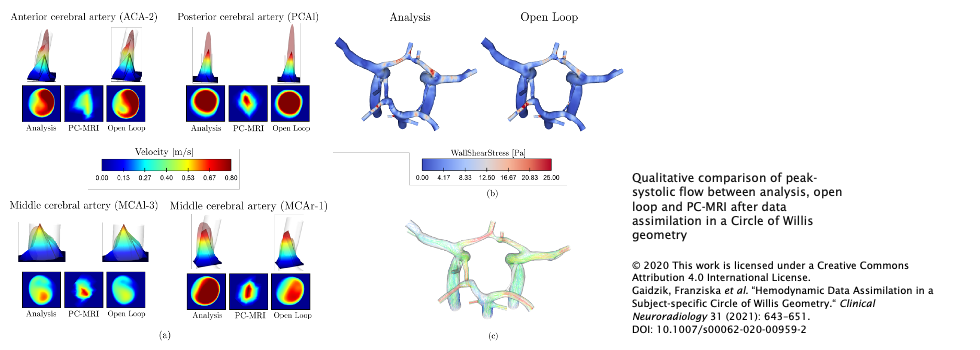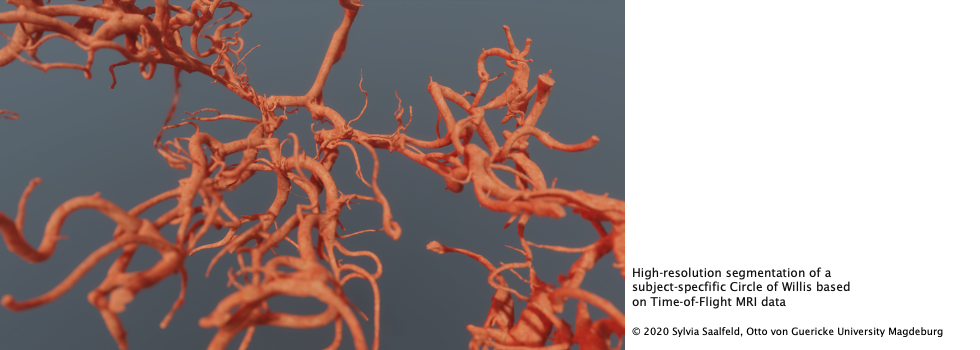Model-based reconstruction methods for CT perfusion imaging
...
M1.8 | Augmented 4D flow
Funding period: Dec 2017 to Apr 2022
Researcher: Franziska Gaidzik, née Schulz
Wrap-up
Keywords: Data Assimilation, Computational Fluid Dynamics (CFD), Phase-Contrast Magnetic Resonance Imaging (PC-MRI), Uncertainty Quantification, Hemodynamics
Background:
Hemodynamics play a pivotal role in various cardiovascular diseases, such as intracranial aneurysms. The blood flow in arteries can be estimated using various methods. PC-MRI measurements can provide 4D flow information (time-resolved 3D spatial flow velocities), albeit with limited temporal and spatial resolution especially in the brain. CFD simulations can capture intracranial aneurysms, but numerical computations are strongly influenced by the boundary and initial conditions. Therefore, measurement of patient-specific flow information – e.g., from PC-MRI – is recommended to be used to steer the simulations in an optimal manner.
Objective:
The primary aim of the presented project is the development of a data assimilation pipeline that is especially suited for the needs of hemodynamic problems. Data assimilation is efficiently used to enhance intracranial patient-specific flow measurements with numerical data. A multimodal approach will be developed that focuses on hemodynamic related requirements.
Methods:
A Localization Ensemble Transform Kalman Filter (LETKF) [1] was implemented to fully incorporate noisy, low-resolution Phase-Contrast MRI data into an ensemble of high-resolution numerical simulations. Furthermore, the project focused on uncertainty quantification for both, observation data and numerical model.
Results:
Proof-of-Concept data assimilation experiments have been performed on different hemodynamic applications. Flow prediction after assimilation of the data has been ensured for all applications, associated with reduced uncertainties in the analysis result.
Conclusions:
This project demonstrates the potential of data assimilation to provide detailed information on vascular flow, and to reduce the uncertainty in such estimates by combining various sources of data in a statistically appropriate fashion.
Originality:
Although widely used in many areas of science and engineering (originally in weather forecasts), the application of DA in hemodynamics is still in its infancy and provides an alternative to physics-based denoising techniques.












